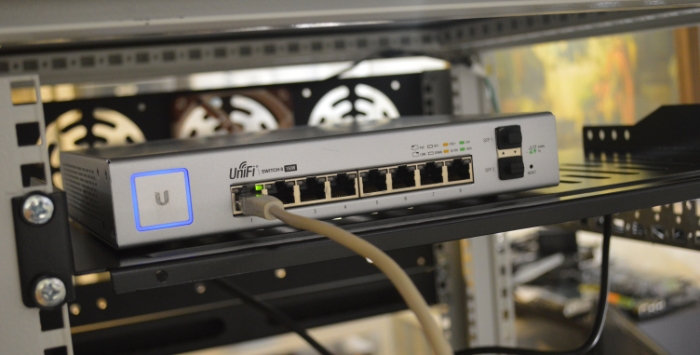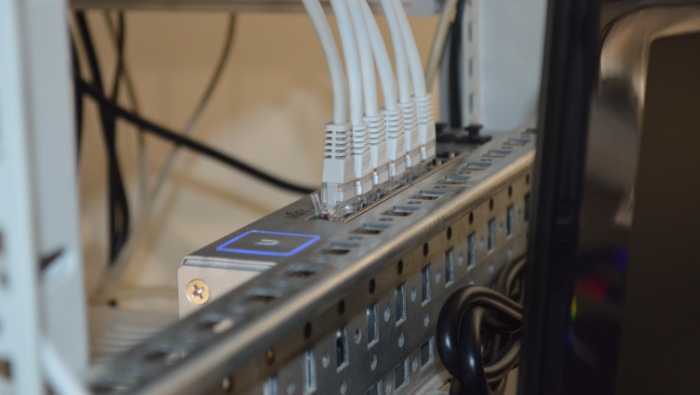What Is Power Over Ethernet? What You Need to Know
When considering different cable installations in your home, it is always wise to consider PoE as an option as well. PoE, or Power over Ethernet, is a method used to deliver power over Ethernet cables, eliminating the need for a separate power supply.
Do We Really Need PoE?
When you remove the need for separate power supplies, your reach becomes infinite, sort of. You can power and use PoE devices as far as you can lay your ethernet cables. This is especially useful in powering devices such as:
- VoIP phones
- IP cameras
- RFID readers
- Computers
- Laptops
- POS (Point of Sale) systems
- Hi-power wifi systems
PoE is not only limited to the devices mentioned above. Constant technological improvements mean that within a few years we can hope to see singular power sources for whole buildings, and no more of a need to look for power outlets!
Benefits of Using PoE Compared to Normal Supply Systems
Flexibility
Devices can be placed where needed and can be relocated as well. since the restriction of the power supply is removed, hard-to-reach areas are no longer an obstacle.
Time and Control
You can simply utilize PoE cables instead of having to install electrical cables. You can also have total control over all devices connected via the PoE system, and can switch it on and off at will.
Restarting connected devices can also be done via PoE switches, and users can make use of the watchdog functionality as well.
A Powered Device Manager can cut power and resupply it at set times to decrease idle time.
Reliability and Safety
PoE is designed to protect against electricity overloads and can be backed up via Uninterruptable Power Supply (UPS) or power generators.
PoE systems have a safety feature that prevents them from damaging any equipment. This is managed by the PSE, which conducts a handshake procedure in order to calculate the amount of power required by the connected device.
If the handshake procedure remains incomplete, the PSE doesn't damage the device by sending power.
Building a PoE Network
PoE Switches
You can connect your devices to a PoE switch, and it will automatically detect whether the device is POE compatible or not and deliver power accordingly. Connecting devices to a PoE switch doesn't require additional power sources.
However, remember that there is a difference between compatible and compliant devices. Compliant devices should have the ability to both send and receive power using Mode A and Mode B (we will talk about this in the next point).
PoE-compatible devices may require installers in order to work correctly.
PoE Injectors
PoE injectors, or midspans, can be used to add PoE capability to regular networks. You can connect the required networks by patching them to the PoE injector.
PoE injectors are connected to the PoE switch and provide power, which combines with data transmitting from the non-PoE network switch.
PoE Splitters
PoE splitters can be connected to the network connection of cameras, which will convert into a lower voltage power source while using the PoE power.
Mode A and B
There are different power pinout pairs for PoE devices, and usually, they either follow Mode A or Mode B.
Mode A pin pair form 1-2 on one side of the DC supply, with pin pair 3-6 forming the other side. Pinout pairs 4-5 and 7-8 are unused.
Mode B uses all pin pairs. Pin pairs 1-2 and 3-4 send data, while pin pairs 4-5 and 7-8 form the two sides of the DC supply.
Different PoE Standards
PoE devices adhere to the IEEE standard, and different standard levels have varying amounts of voltage deliveries, maximum lengths, etc.
There are four main standards, which are:
- IEEE 802.3af
Delivers 37-57V, with supported modes of A + B, with 100 maximum cable length. Minimum output 15.4W.
- IEEE 802.3at
Delivers 42.5-57V, with supported modes of A + B, with 100 maximum cable length. Minimum output 30W.
- IEEE 802.3bt Type 3
Delivers 37-57V, with supported modes of A + B (4-pair mode), with 100 maximum cable length. Minimum output 60W.
- IEEE 802.3 Type 4
Delivers 41.1-57V, with supported modes of A + B (4 pair mode), with 100 maximum cable length. Minimum output 100W.
PoE Extenders
While the base reach of a PoE switch is around 100m, you can extend the length by connecting a PoE extender. A PoE extender can increase the range by a further 100m, and you can increase this up to 500m.
However, the power available decreases as you increase the number of extenders. For example, a connection at the end of 4 extenders might give 20W less, since the extenders might be using 5W each.
Allocating the Correct Amount of PoE Power
You need to ensure that the sum of the required power of all your connected devices is less than the PSE's total point budget.
A 130W switch with eight ports can deliver a maximum of 16.25W if all the ports are being used. There will be some remaining energy, as Type 1 PDs use 15.4W per device.
Calculating the deliverable wattage is as simple as diving the total PoE budget with the maximum PoE output and rounding down the answer.
Are There Any Drawbacks to PoE Systems?
There are some limitations to using PoE systems, which we'll highlight below.
Power Outages
Having a secondary source of power becomes a necessity if your primary source is prone to outages. Otherwise, the whole system might go down, along with all the connected devices.
Distance
The use of extenders becomes a requirement if your location is larger than 100m.
Higher Short-Term Costs
While you may save costs in the long run, installing PoE switches will initially cost you more than getting a normal network switch.
Power Requirements
The initial 2003 PoE standard limited devices to 30W. any devices requiring higher wattage need to comply with IEEE 802.3bz
To learn more about standards, visit the IEEE Standards Association website, which can be found here.
Hopefully, this article will have solved your query, and you're well on your way to installing a PoE system!




